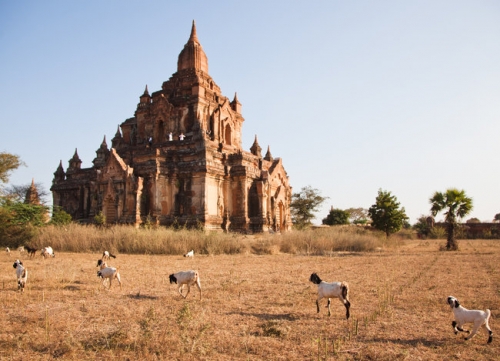
“Burma” has been quite the Western media buzzword lately. What with Aung San Suu Kyi’s European tour, Rakhine’s riots, and ongoing debates about which name—Burma or Myanmar—is appropriate to call the long-calamitous nation, the country’s wins and woes have saturated the pages of many publications.
The most recent addition to this spate of articles was yesterday’s New York Times piece about Bagan, site of an ancient Burmese Buddhist city that has since its zenith in the 11th and 12th centuries been reduced to ruins. Covered by over 2,000 Buddhist temples, stupas, and monasteries, the area’s art and architecture is finally attracting scholars (and tourists) who had stayed away during Burma’s most troubled times. According to the NY Times, these buildings, as well as the Buddhist relics found at the site, mark it “as a staging point from which Buddhism spread across Asia.”
Bagan underwent an in-house restoration in the late 70s and 80s; Burmese-only patrons supporting the work of Burmese-only experts rebuilt the ancient infrastructure, though not to the satisfaction of all.
Critics took issue with the use of inauthentic building materials, like cement in place of stucco, and contend that certain architectural features—in particular the decorative finials that top religious monuments—were reconstructed according to imagination rather than science. A few prominent temples contain incongruous elements like disco lights flashing around the heads of Buddha statues.
Historically inaccurate as disco lights may be, such idiosyncrasy is sure to attract even more international tourists, especially if Bagan is chosen to be a World Heritage site, as some believe it will. In any case, as the New York Times concludes, it’s good to see that Burma’s political progress is bringing these untold gems to the fore, garnering attention as well as financial support for preservation efforts and educational programs.